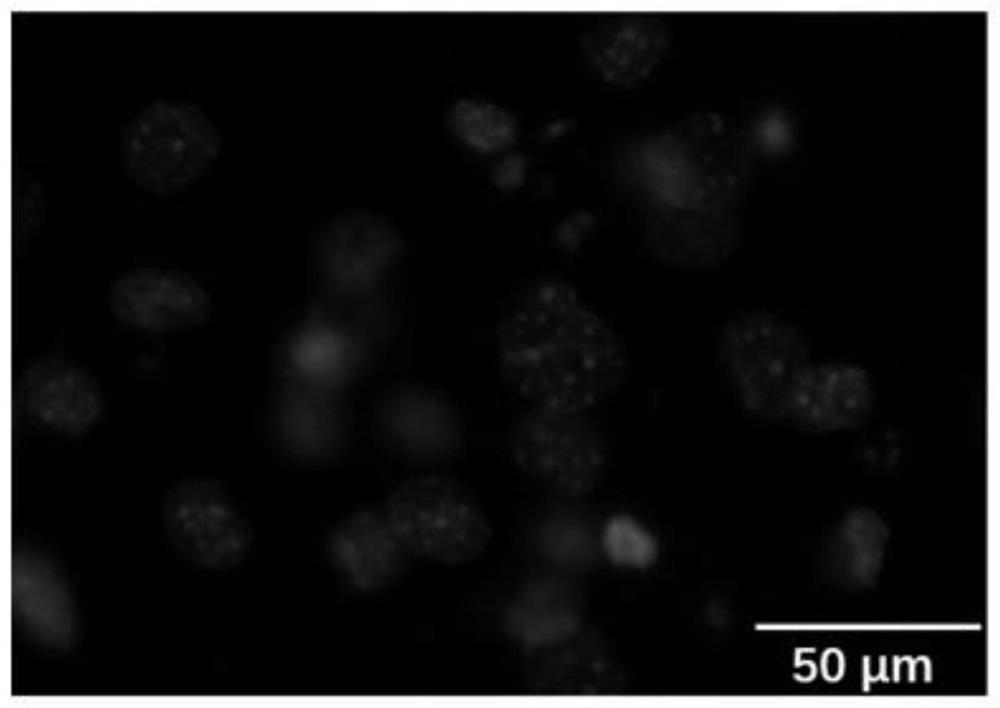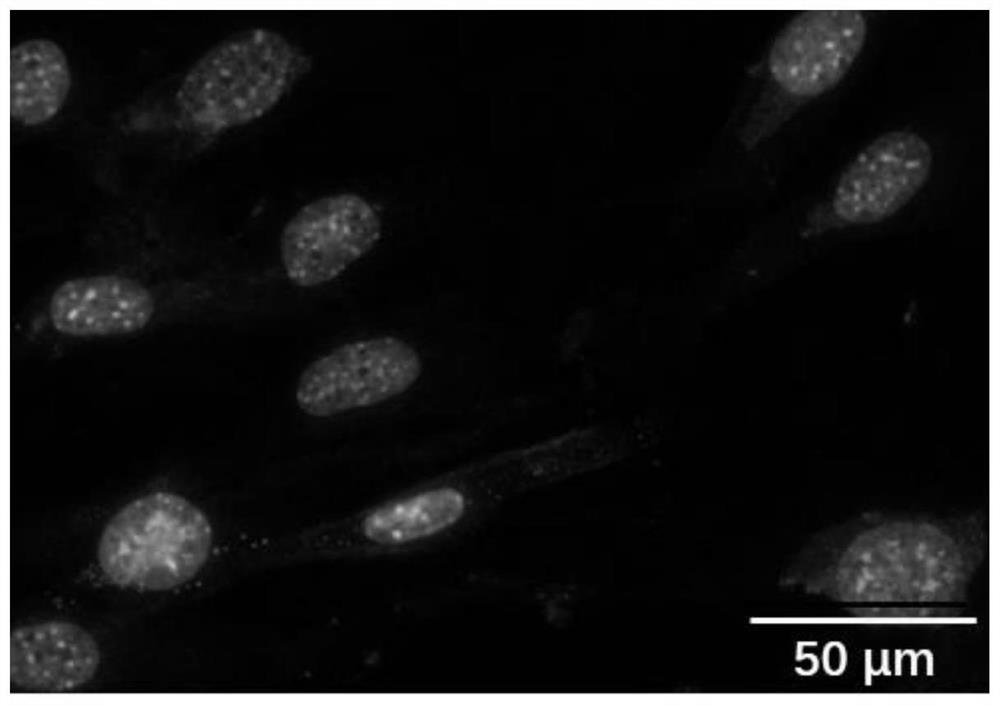Chemical induction method for reprogramming dermal fibroblasts into endothelial progenitor cells
A technology of fibroblasts and endothelial progenitor cells, applied in the field of cell engineering, can solve the problems of easy side effects, complex technical methods, high cost and so on
- Summary
- Abstract
- Description
- Claims
- Application Information
AI Technical Summary
Problems solved by technology
Method used
Image
Examples
Embodiment 1
[0039] (1) Isolation and culture of fibroblasts from mouse skin:
[0040] ① Newborn mice were killed one day after birth, after being disinfected with 75% alcohol, they were rinsed with 0.90% normal saline, and the skin tissue of the whole body was peeled off;
[0041] ②Remove subcutaneous fat and blood vessels, cut into pieces, and digest with 0.2% type I collagenase for 1 hour;
[0042] ③Filter with a 70um cell sieve to obtain a centrifuged suspension of the cells and inoculate them into a petri dish. CO 2 Incubate in an incubator, and subculture every 2-3 days;
[0043] (2) Compound FSK induces fibroblasts;
[0044] ① Add DMSO to FSK to dissolve, configure it as a 10 μmol / L solution, add it to the fibroblasts obtained in step (1), and continue to place it in 37°C CO 2 Incubation was carried out in an incubator for 7 days, and the cell culture medium was replaced every two days to obtain endothelial progenitor cells.
Embodiment 2
[0046] (1) Isolation and culture of fibroblasts from mouse skin:
[0047] ① Newborn mice were killed one day after birth, after being disinfected with 75% alcohol, they were rinsed with normal saline, and the skin tissue of the whole body was peeled off;
[0048] ②Remove subcutaneous fat and blood vessels, cut into pieces, and digest with 0.1% type I collagenase for 2 hours;
[0049]③Use a 70 μm cell sieve to filter, obtain cells for centrifugation suspension, and inoculate them in a culture dish. CO 2 Incubate in an incubator, and subculture every 2-3 days;
[0050] (2) Compound FSK induces fibroblasts;
[0051] ① Add DMSO to FSK to dissolve, configure it as a 5 μmol / L solution, add it to the fibroblasts obtained in step (1), and continue to place it in 37°C CO 2 Incubation was carried out in an incubator for 10 days, and the cell culture medium was changed every two days to obtain endothelial progenitor cells.
Embodiment 3
[0053] (1) Isolation and culture of fibroblasts from mouse skin:
[0054] ① Newborn mice were killed one day after birth, after being disinfected with 75% alcohol, they were rinsed with normal saline, and the skin tissue of the whole body was peeled off;
[0055] ②Remove subcutaneous fat and blood vessels, cut into pieces, and digest with 0.3% type I collagenase for 50 minutes;
[0056] ③Filter with a 70um cell sieve to obtain a centrifuged suspension of the cells and inoculate them into a petri dish. CO 2 Incubate in an incubator, and subculture every 2-3 days;
[0057] (2) Compound FSK induces fibroblasts;
[0058] ① Add DMSO to FSK to dissolve, configure it as a 15 μmol / L solution, add it to the fibroblasts obtained in step (1), and continue to place it in 37°C CO 2 Incubate in an incubator for 1 day to obtain endothelial progenitor cells.
PUM
 Login to View More
Login to View More Abstract
Description
Claims
Application Information
 Login to View More
Login to View More - R&D
- Intellectual Property
- Life Sciences
- Materials
- Tech Scout
- Unparalleled Data Quality
- Higher Quality Content
- 60% Fewer Hallucinations
Browse by: Latest US Patents, China's latest patents, Technical Efficacy Thesaurus, Application Domain, Technology Topic, Popular Technical Reports.
© 2025 PatSnap. All rights reserved.Legal|Privacy policy|Modern Slavery Act Transparency Statement|Sitemap|About US| Contact US: help@patsnap.com



